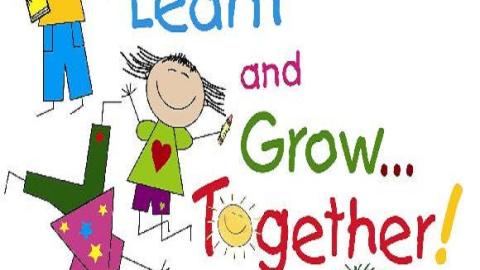Career Angst? Go Back to Kindergarten

Live a balanced life – learn some and think some and draw and paint and sing and dance and playand work every day some. — Robert Fulghum, “All I Really Need To Know I Learned In Kindergarten”
The financial crisis threw a lot of us into a funk: either we lost our jobs or questioned what we were doing with our lives in the first place. Some literally packed their bags and went on 6 month trips around the world. If you can’t do the global adventure trip, but would love to ‘reset’ your thinking and career, start by living the kindergarten life!
When Academy Award winners breathlessly thank their lovers or Presidents wax poetical about community activists at their inauguration, they fail to mention where their journey started: kindergarten. Kindergarten is entrusted with unlocking the creative and analytical prowess in toddlers, while also making them sociable and well-adjusted individuals. Watching toddlers run out of kindergarten, full of happy chatter, hands clutching drawings or letters, is the joy and envy of every adult. Yet in just three simple ways, we can get closer to that carefree happy feeling at the end of a workday.
The space is messy and collaborative.
Ever compared a kindergarten to your office? The kindergarten is full of circular tables where little children gather and work in groups, with groups working on different things (one group counts numbers, while another paints, yet another listens to stories). The tables and chairs are colorful, as are the walls, evoking a garden that contrasts radically to the Swedish hospital ambiance of most offices (Google offices are a rare exception). Kindergarten is messy and open to collaboration, while offices are conformist and geometric, with rows of neatly arranged grey cubicles reminiscent of the kind of depressing factory assembly line that gave Marx nightmares. It doesn’t take a rocket scientist to predict how stifled your imagination feels straight-jacketed in an office.
You probably can’t walk into your boss’s office and demand that the walls be painted apple red and sunlight yellow, or that your latest power point presentation be pinned to the office wall. But you can change your home environment. Paint your desk a bright color, put up whiteboards where you make drawings and jot down ideas, invite colleagues to come over and work on a presentation and take breaks to play those bongo drums in the corner.
They build things.
Building blocks, Legos and Play-Doh are all fundamental to a kindergarten environment. Children don’t make blueprints: they just start experimenting with shapes, characters, story plots, all the time learning from their mistakes as they mix engineering and imagination. If you’re a manager, consultant, lawyer or banker, chances are you haven’t physically built something in quite a while. Constructing objects for pleasure, whether they are toys, games, robots, cars, sweaters, all hone your right and left brains without inducing any stress. Plus, at the end of the exercise, you get the deep gratification of an end product, something many of us in the service industry especially miss. Even for those in product companies, the distributed network of design, production, marketing and distribution makes it impossible to viscerally celebrate the launch of a new idea.
Luckily, there are a few ways you can feel it again: (i) Join the Do-It-Yourself movement spreading like wildfire in the US. Download digital designs from Thingiverse, buy a Makerbot (a 3D printer rapid prototyping machine), and start manufacturing items in your garage; (ii) If you’re a parent, get tips from GeekDad and have fun with everything from creating comic books to building cool bots using Lego Mindstorms ; and (iii) If you’re more interested in virtual prototyping, then learn how to program. Nothing gets you hooked on programming than the first time the computer outputs “Hello World” and you get a rush of immense gratification.
It’s about having fun.
There’s a lot of laughing and giggling in kindergartens. Emotions fuel creativity, and unless you’re writing a depressing novel, the emotion that will be most constructive for you is probably of the positive kind. How about dancing, just being silly, doodling or making prototypes from kitchen items like foil or straws? You can pay thousands of dollars to take the Play class at Stanford which makes you do exactly that, or just try it yourself at home.
You may think fun is overrated, but especially in consumer-centered products and services, it is incredibly important. A page from the most watched entertainer on YouTube, one of Time magazine’s 100 most influential people in the world, and fashionista rockista Lady Gaga speaks volumes. She has won kudos, fans and millions of dollars from being fearless, experimental, and having a sense of humor about her look and music. Jonas Åkerlund, the director of her ueber-hit music video Telephone with Beyonce describes their working style: “We just allow ourselves to be very stupid with each other, and then you get ideas like sunglasses made of cigarettes.”
Try being silly tonight! It might not come that easily to you anymore, but it might be just the thing you need to rejuvenate your creative edge.
Ayesha and Parag Khanna explore human-technology co-evolution and its implications for society, business and politics at The Hybrid Reality Institute.





